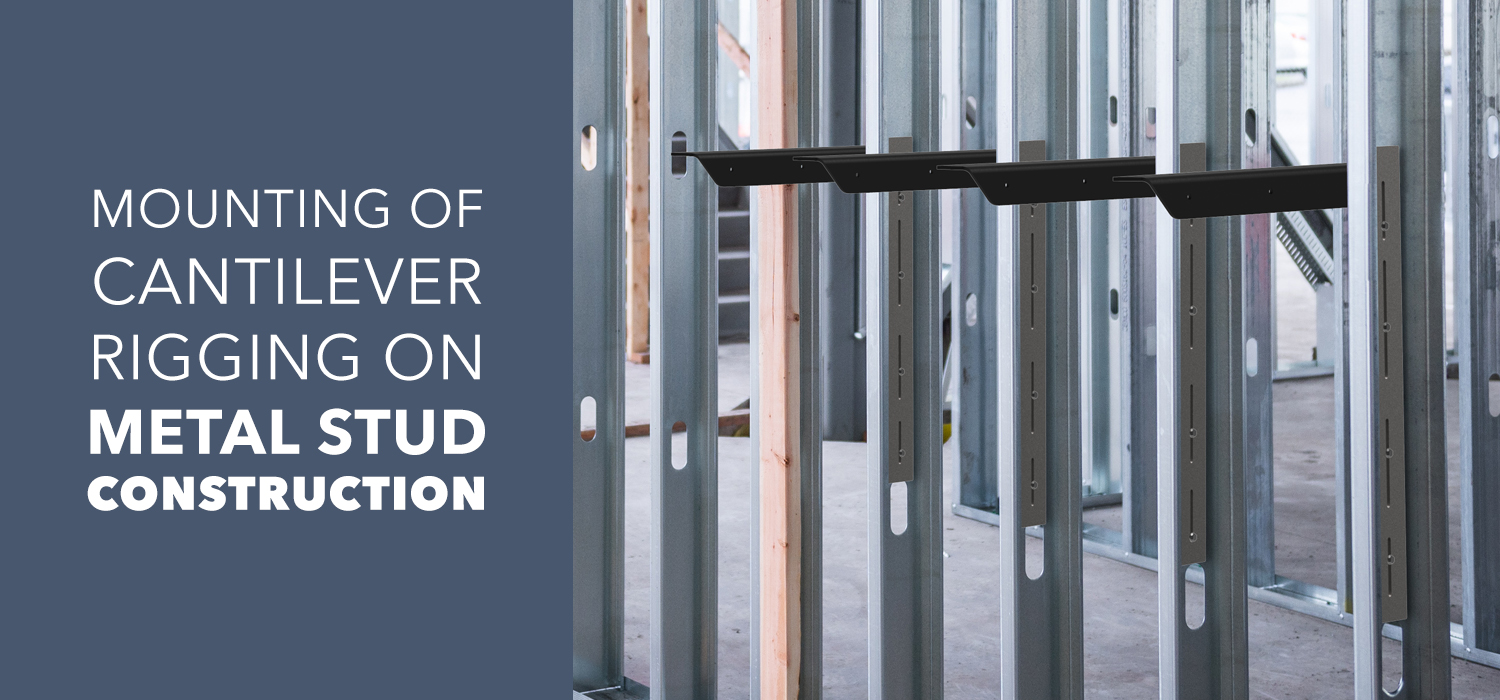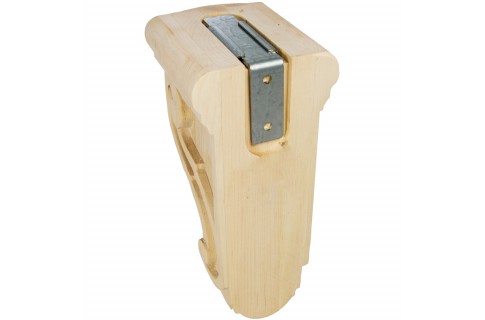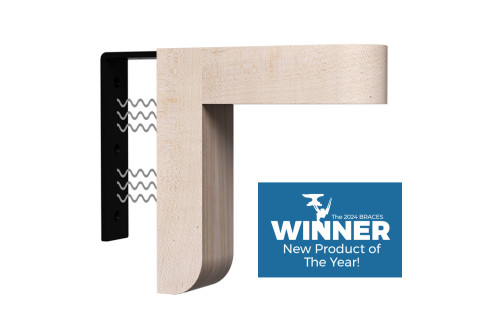
Mounting of Cantilever Rigging on Metal Stud Construction
Steel stud framing has been around for years. Its popularity has grown significantly over the last decade, particularly in commercial construction jobs. Among the numerous advantages proclaimed by steel over wood framing advocates, the primary is the “perfectly straight” profile of the classic C style steel stud. Metal studs are also purported to be lighter and easier to store than wood studs and resisting rotting and fire. But the most compelling benefit of metal studs over wood is the reduced material expenses for the builders. Steel studs are approximately 30% “cheaper” than wood studs.
With all the advantages reported for metal stud framing over wood stud framing, a disadvantage obvious to counter and surface mounting contractors is the propensity of higher gauged, thinner steel studs to flex under weight carrying applications. A metal-framed stud system is certainly strong enough to hold a weight such as a floating vanity or work surface. But the flexing nature of the studs before installation of fascia can show sure signs of weakness when floating a heavy stone surface.
Combating the Metal Stud Flex
As just mentioned, a steel stud system provides a substructure that is sturdy. However, the horizontal flexing of the studs can be concerning when an application requires floating a cabinet with hard surfaces and fixtures. To combat the flexing of the metal studs, builders will utilize wood blocking and strapping to tie studs together. These connections create multi-legged support systems that work as a single unit to resist flexing.
While these measures certainly provide a solution to resist metal stud flexing, they can be cumbersome and time consuming for the contractor. In a metal stud framed application it may be considered contrary to the intent to involve wood blocking to the application for flex resistance. In most instances, any wood blocking requirement will involve the installation of a full wood stud that is tied to the steel stud. Again, while it does solve the problem it just seems like a waste.
The Stud Brace Technology™ Solution
The Metal Stud Cantilever Plate, utilizing Stud Brace Technology™, is a solution built on simplicity and the strength of steel. The heavy-gauge steel plate used in the Metal Stud Cantilever Plate “beefs” up the strength of a metal stud and clamps a floating surface support bracket to a steel stud without using wood blocking. The sizing of the Cantilever Plate is designed to increase the support footprint of the bracket and improve the carrying capacity of the steel stud system overall. While strapping continues to be recommended in rigging and cantilever applications, the Metal Stud Cantilever Plate eliminates the need for fixing an entire wood stud to your metal studs. This steel stud mounting solution saves both time and money.
How the Metal Stud Cantilever Plate Works
Federal Brace designed the Metal Stud Plate to work with several of their floating counter and vanity support brackets. The fastener hole pattern specified in the Cantilever Plate matches with the various hole patterns found on these support brackets so that the plate may be used interchangeably with the different supports. Below is a list of the names and part numbers compatible with the Metal Stud Cantilever Plate:
- Hammam Lavatory Support - SKU Numbers: FB-39836, 39832 (48" bracket requires 2 plates), and 39834 (48" bracket requires 2 plates)
- Stud Mounted Floating Shelf Bracket - SKU Numbers: FB-04332
- Versa Bracket - SKU Numbers: FB-03768 and FB-03933
- CG-Carolina - SKU Numbers: FB-01843, FB-1844, FB-1845, FB-1846, FB-1847, FB-1848, FB-1849, FB-1850, FB-1851, FB-1852, and FB-1853
As we continue to develop new solutions for mounting surfaces and riggings on metal stud construction, this list of products will grow and provide more options for contractors and homeowners. For more information on the Metal Stud Cantilever Plate utilizing Stud Brace Technology™ follow this link - https://www.federalbrace.com/metal-stud-cantilever-plate-978/FB-04741



